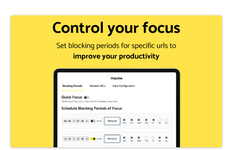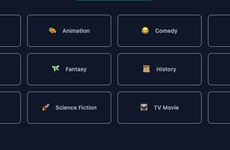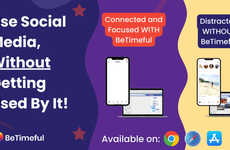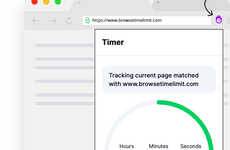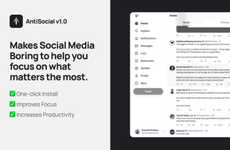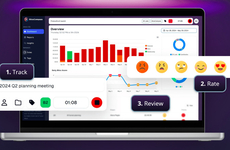
The Blissify App Blocks Websites That Disrupt the User's Good Mood
References: blissify.io & fastcodesign
The Blissify is a web browser extension that preemptively keeps an eye on a person's emotional state, and blocks webpages that decrease one's good mood. The app is able to track how users respond to different pages.
The app is able to gain such intimate information by capturing the user's reactions through their webcam that are then cross-referenced with an algorithm that reads the mood. Based off of the state of the mood, Blissify will block the webpage temporarily, as a way to stop upsetting the consumer. The app is completely responsive to the laptop user, showcasing a cartoon smilie face that reflects the user's mood in real-time. The app hopes to diminish upset caused by visiting certain sites or reading specific content.
The app is able to gain such intimate information by capturing the user's reactions through their webcam that are then cross-referenced with an algorithm that reads the mood. Based off of the state of the mood, Blissify will block the webpage temporarily, as a way to stop upsetting the consumer. The app is completely responsive to the laptop user, showcasing a cartoon smilie face that reflects the user's mood in real-time. The app hopes to diminish upset caused by visiting certain sites or reading specific content.
Trend Themes
1. Emotional Monitoring Technology - Technology that analyzes users' emotions can be used to develop apps or browser extensions that promote positive emotional experiences online.
2. Personalized Mood-based Web Browsing - Personalizing web browsing based on the user's mood can enhance their experience and increase engagement.
3. Real-time Emotional Feedback - Real-time emotional feedback through computer vision technology can be used to create a variety of apps that assist users in managing their emotions.
Industry Implications
1. Healthcare - Emotional monitoring technology can be used to develop mental health applications that track and promote positive emotional experiences.
2. Marketing - Personalized mood-based web browsing can be used to create more effective targeted ads and increase engagement.
3. Education - Real-time emotional feedback can be used to improve online learning experiences by detecting when a student may be struggling to understand or feeling overwhelmed.
4.7
Score
Popularity
Activity
Freshness

